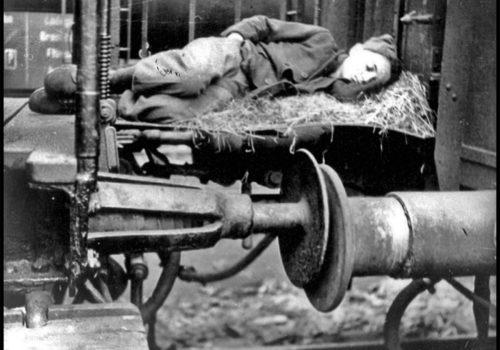This essay examines the role of photo-based imagery played in depicting Jewish survivors who were confined to displaced persons (DP) camps by the Allies after Germany’s defeat in World War II.
After Germany capitulated in May 1945, there were more than eight million “displaced” persons who were forced to leave their home country. To address the refugee problem generated by World War II, the Allies established displaced persons (DP) camps in the Allied-occupied zones of Austria, Germany, and Italy. The first occupants of these camps were concentration camp survivors who had been liberated by the Allies on German soil. Initially, conditions in these camps were extremely harsh as many of the DP camps were former concentration camps and German army camps. Survivors continued to find themselves locked behind barbed wire, subsisting on inadequate amounts of food and suffering from shortages of clothing, medicine, and supplies. Often, Jewish survivors suffered additional trauma because they were held in the same camps as German civilians and/or Nazi perpetrators. In the summer of 1945, President Harry Truman asked former U.S. immigration commissioner Earl Harrison to tour the DP camps. Harrison was shocked by what he found and informed Truman: “We appear to be treating the Jews as the Nazis had treated them, except that we do not exterminate them.” Based on Harrison’s report, the United States established separate camps for Jewish DPs.
Robert Hirsch
To learn and see more visit the VASA Journal on Images and Culture:
https://vjic.org/vjic2/?page_id=7629
To view the previous essays visit the VASA Table of Contents at:
https://vjic.org/vjic2/?page_id=6312
This series of VASA essays has been expanded into CEPA Gallery’s National Endowment for the Arts (NEA) supported, multi-prong exhibition and project: “The Power of Resilience and Hope: Photography and the Holocaust – Then and Now.” Part I of this project opens in Buffalo New York on Saturday, January 20th and runs through the end of May 2024 along with an online symposium and numerous community educational programing. See: www.cepagallery.org/exhibit-event/photography-and-the-holocaust-then-and-now-2023/
For more on this subject see: Robert Hirsch’s Ghosts: French Holocaust Children catalog at www.lightresearch.net
















